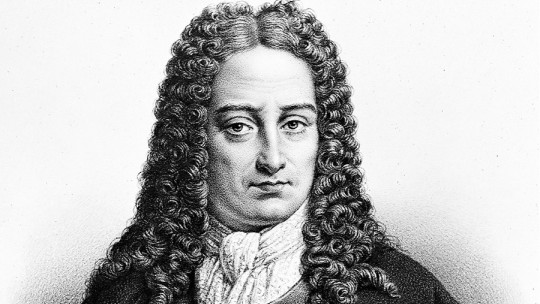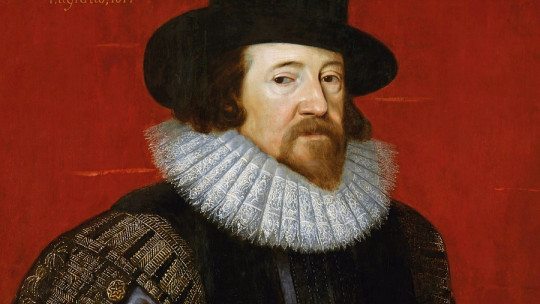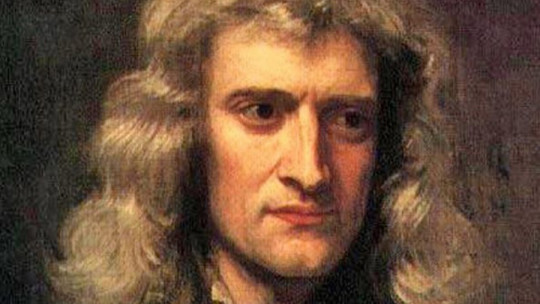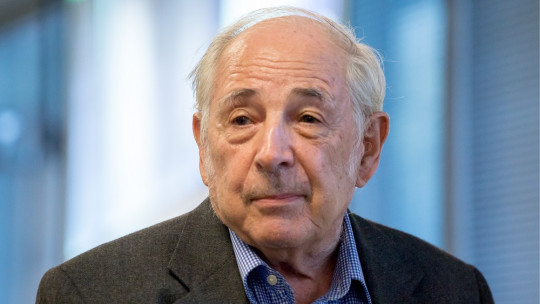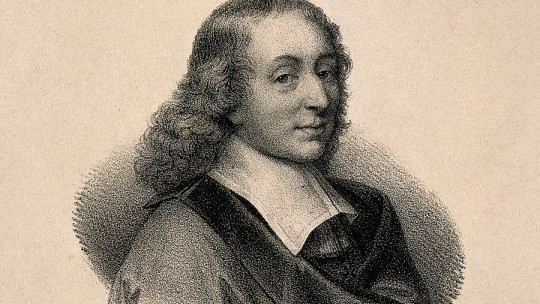
Blaise Pascal was a French mathematician, philosopher, physicist and theologian who contributed to science with the invention of what would later become the calculator, in addition to laying the foundations of computing.
As a person of his time, the 17th century, he touched on various aspects of science and philosophy, gaining some popularity and going down in history for his great mathematical contributions, in addition to being a great defender of the scientific method. Let’s look at his life and his contributions.
In this article we will see a biography of Blaise Pascal in summary format.
Summary Biography of Blaise Pascal
Pascal’s life, although short, is very interesting, considering his great advances in computing, mathematics, and improving barometers. Let’s see how he was.
Early years
Blaise Pascal was born in Clermont-Ferrand, France, on June 19, 1623 being the son of Antoinette Begon, who would die when he was 3 years old, and his father Etienne Pascal, who was a local judge, president of the tax court of Montferrand and member of the small nobility.
Although a man of law, Blaise Pascal’s father was very interested in science and mathematics, something that aroused the curiosity of the little boy and his two sisters, and of special mention is one of them, Gilberte Perie, who in her adulthood would write a biography of Blaise.
Trip to Paris and scientific awakening
In 1631 the father decided to move with his three children to Paris, where he decided to educate them on his own The little Pascals, from a very young age, showed good intellectual aptitudes, especially Blaise who, at only eleven years old, would write a small treatise on the sounds emitted by vibrating bodies.
Young Pascal’s interests in mathematics were such that his father decided to prohibit him from continuing to dedicate himself to it, fearing that it would have a negative impact on his studies of Latin and Greek, languages that at the time determined social prestige.
But Preventing him from studying mathematics was really counterproductive and, therefore, Mr. Pascal allowed young Blaise to study Euclid especially after seeing, one day, that his son was secretly writing on a wall a demonstration that the angles of a triangle add up to two right angles.
It also allowed him to attend conferences given by great scientists and mathematicians of the time, such as Girard Desargues, Claude Mydorge, Gilles de Roberval, Pierre Gassendi and, of course, René Descartes. All of them held their assemblies in the monastic cell of Father Marin Mersenne.
At sixteen years old, Blaise Pascal was interested in a work by Desartes on conic sections It was at that age that he wrote his first serious work on mathematics, called Essai pour les coniques. (“Essay on conics”).
Problems with Richelieu
In 1638, due to France’s financial situation and its involvement in the Thirty Years’ War, Armand Jean du Plessis, Cardinal de Richelieu and French statesman, decided to freeze payments in various services.
This had a negative impact on the Pascal family, since patriarch Etienne had invested his money in treasury bonds. The family’s wealth plummeted, forcing Etienne Pascal to leave Paris, leaving his children in the care of a neighbor The escape was not only economic, since Etienne had become deeply entangled with Cardinal Richelieu.
As time went by, the relationship between Etienne Pascal and the cardinal would be sustained, pardon arriving and being appointed in charge of collecting taxes in Normandy
Life in Normandy and invention of pascaline
The patriarch’s life, once readmitted to public life, became much more pleasant than when he was on the run, but he was now much busier. In 1642, Blaise Pascal, seeing the difficulties his father had when doing accounts in his job as a debt collector, decided to build a machine that would allow him to speed up arithmetic calculations.
This is when Blaise Pascal builds the Pascaline, the first adding machine in history, which would basically be the predecessor to the modern calculator and computers Its operation was mechanical and was made up of gears.
Although calculation helped greatly, something never seen in French society until then, the machine was not commercially successful: it was extremely expensive and difficult to manufacture.
It was also in the capital of Normandy, Rouen, where Blaise Pascal would begin to become interested in physics, especially hydrostatics undertaking his first studies and experiences on the void, intervening in the controversy over the existence of “horror vacui” in nature.
First and second conversion
In 1645 Pascal had already embraced the Jansenian doctrine, a Catholic reformist movement initiated by Corneille Jansen, based on the doctrine of Saint Augustine of Hippo on grace and original sin. He advocated greater moral rigorism.
In 1647, due to his poor health, doctors recommended he return to Paris What Blaise Pascal would not know with this period of rest is that there he would have a kind of Second Conversion, following the one he had already done when he discovered the Jansenist theses.
Pascal became convinced that the path to God lay clearly in Christianity, and not in philosophy. At this point Pascal completely suspended his scientific work.
Last years and death
The last 10 years of his life were focused on trying to figure out how to make people believe in the need to believe in God Regardless of its existence or not, according to Pascal it was better to believe than not to believe because, if it exists but is not believed, access to heaven cannot be gained.
Pascal’s health had always been poor: depression, toothaches, general weakness are some of the medical problems diagnosed in Blaise Pascal throughout his life.
His death occurred when he had just turned 39 years old on August 19, 1662, due to stomach cancer.
Intellectual legacy
As a great figure of his time, Blaise Pascal was a mathematician, philosopher, Catholic theologian and polymath. He made important contributions in the field of mathematics, in addition to logically considering the benefits of believing in God
Pascal’s Triangle
In 1653 he published “Traité du triangle arithmétique” (“Treatise of the arithmetic triangle”) in which he explained the approach to what would later be called Pascal’s triangle.
This triangle is made up of integers, it is infinite and asymmetric In the first row starting from the left, the number 1 is placed. In the following rows, the numbers are placed so that each one is the sum of the two numbers above it. It is assumed that the area outside the triangle, that is, outside the edges, contains zeros, so that the sum between the outside of the triangle and the first row gives 1.
This triangle has the following properties:
1. First property
The sum of the elements of any row is the result of raising 2 to the number that defines that line, starting with 0 That is, raise 2 to the square, to the third, to 4…
For example, the sum of the elements in the fourth row (1, 3, 3, 1) is 8, a value that is also obtained 2^3.
Another longer example, the sum of the elements of the seventh row (1, 7, 21, 35, 35, 21, 7, 1) is equal to the value obtained from 2^7.
2. Second property
If the first number in the row is prime, all the numbers in that row will be divisible by it, except the number 1
For example, in row 9, the numbers that follow are divisible by itself: 36, 84, 126…
3. Third property
Any diagonal line that begins at one end of the triangle, of any length, it satisfies that the sum of all the numbers that make it up are below the last one of them, but on the opposite diagonal.
That is, the row with the number 4 on the left side can also be found on the right side and, if you follow both down, you will see that they coincide in a common value, in this case, 20.
Pascaline: the first calculator
The Pascaline is considered the first modern calculator Inside there were eight cogwheels connected to each other, which represented the decimal system. Each wheel was marked by 10 numbers, from 0 to 9.
A pair of the 8 wheels of the machine, specifically those on the far left, were used to represent decimals and the other six were used to represent whole numbers.
This meant that this machine could handle values between 0.01 and 999,999.99, which although it may seem like a trivial thing to us today, at a time when to make long calculations you needed several sheets of paper and trusting not had made a miscalculation, this machine could have been of great help.
Pascal’s Theorem
Pascal’s theorem states that if a hexagon of any shape is inscribed within a conical section, that is, the shape of the hexagon suggests a kind of cone, and the opposite pairs of sides are extended until they intersect, The three points in which they coincide will be located on a straight line This straight line is called Pascal’s line.
Probability and theology: Pascal’s wager
Pascal’s wager is a theological-philosophical reflection on belief in God, based on probabilistic considerations which maintains the following:
With these four approaches, Pascal indicates that it is better to believe in God than not to believe in him, because, if he does not exist, nothing is lost, simply the belief that he existed.
On the other hand, if it turns out that God exists and one has not believed in him, based on the foundations of the Catholic religion, which was what Blaise Pascal believed in, Not having believed in him and not having accepted his existence minutes before dying implies a sinful act with which there is no option of entering heaven.
Contribution to physics
Pascal worked on hydrodynamics and hydrostatics, focusing on the principles of hydraulic fluids Among his inventions that are still used today are the hydraulic press and the syringe.
In 1646 the Italian Evangelista Torricelli’s experiments with barometers were already known. After Pascal replicated one of those barometers, he began to wonder what force was causing the mercury to stay inside the tube, and what was filling the space between this liquid metal and the end of the tube.
At that time there was a deep debate about the existence of absolute vacuum. Many scientists thought, deepening their thinking in Aristotelian notions, that in the world there was an invisible, unquantifiable and imperceptible matter, which occupied the space of that which was not occupied by quantifiable substances.
After a series of works and experiments, Blaise Pascal published his work New experiences touching the video (“New experiments on the vacuum”). Here he details a series of rules describing up to what points various liquids could be supported by air pressure, and offered reasons for what might be above the liquid column, which should be a vacuum.
His idea of the vacuum, although it was a great milestone for his time, caused him to have conflicts with other important scientists of the time. like Rene Descartes
Honors
The figure of Blaise Pascal has not gone unnoticed, and has been the inspiration for several milestones in science that have been named in his honor.
In 1970, Swiss professor Niklaus Wirth published a programming language that he called Pascal, in honor of the French scientist This language has some peculiarities that make it unique, such as the fact that the assignment is carried out using the command “:=” instead of “=”, the latter being the most common in programming languages.
Blaise Pascal has also been remembered by naming celestial objects after him. On the Moon there is the Pascal crater in his honor and, also, a satellite (4500) has been named after Pascal.

